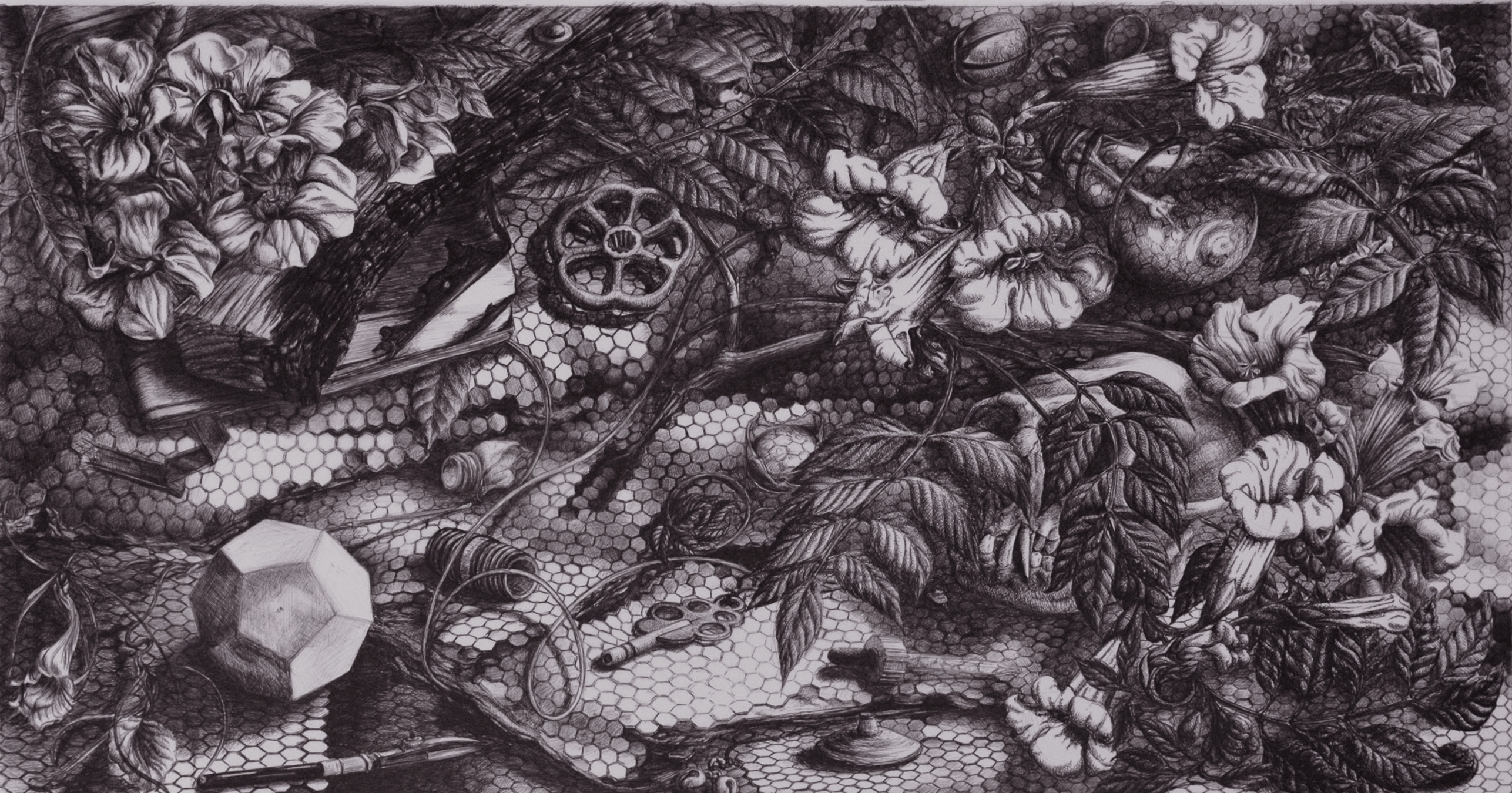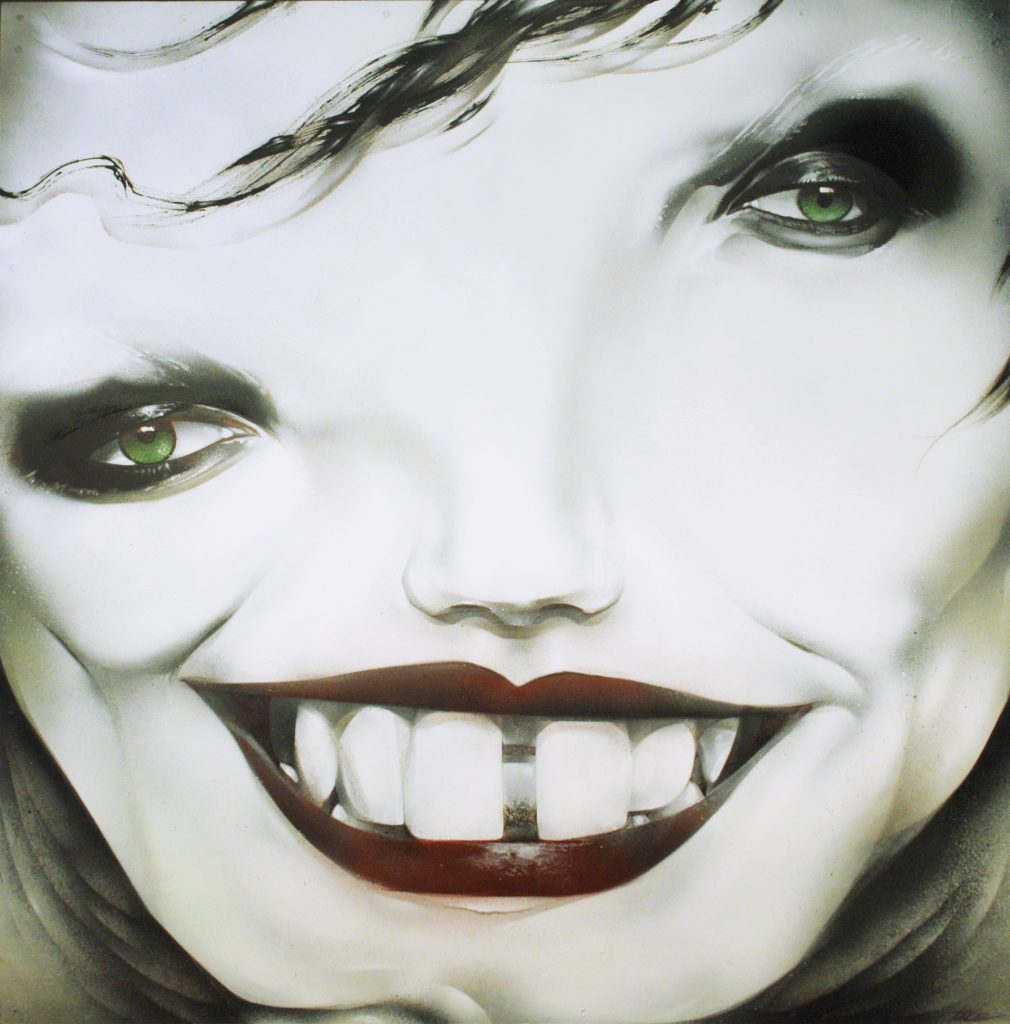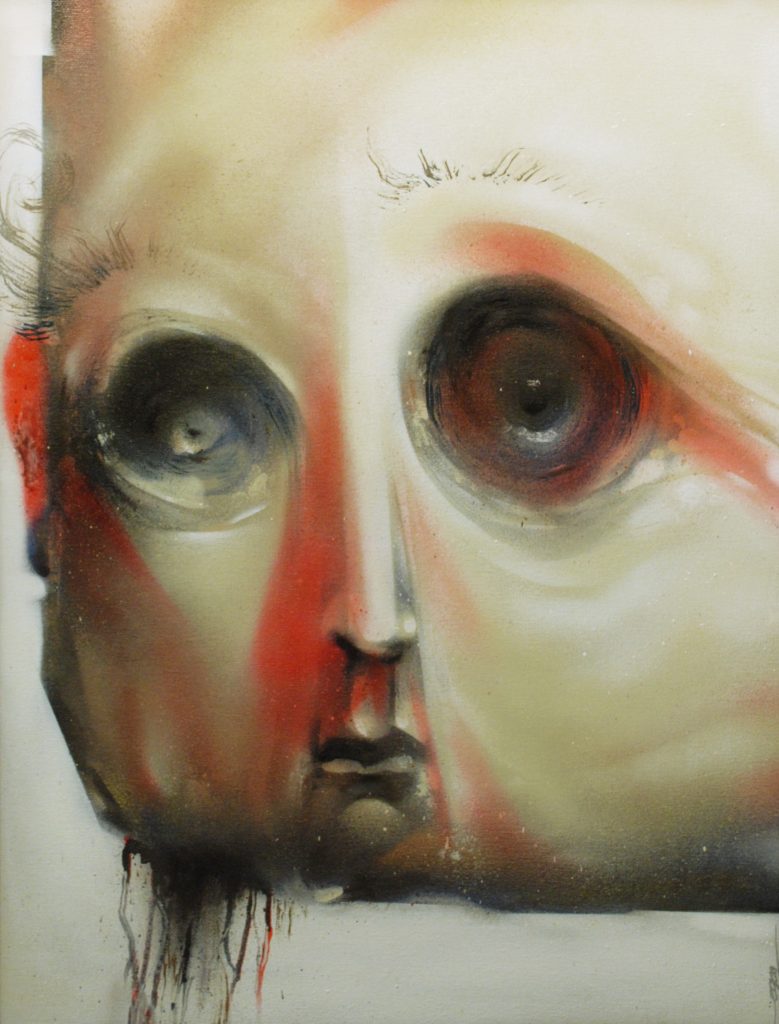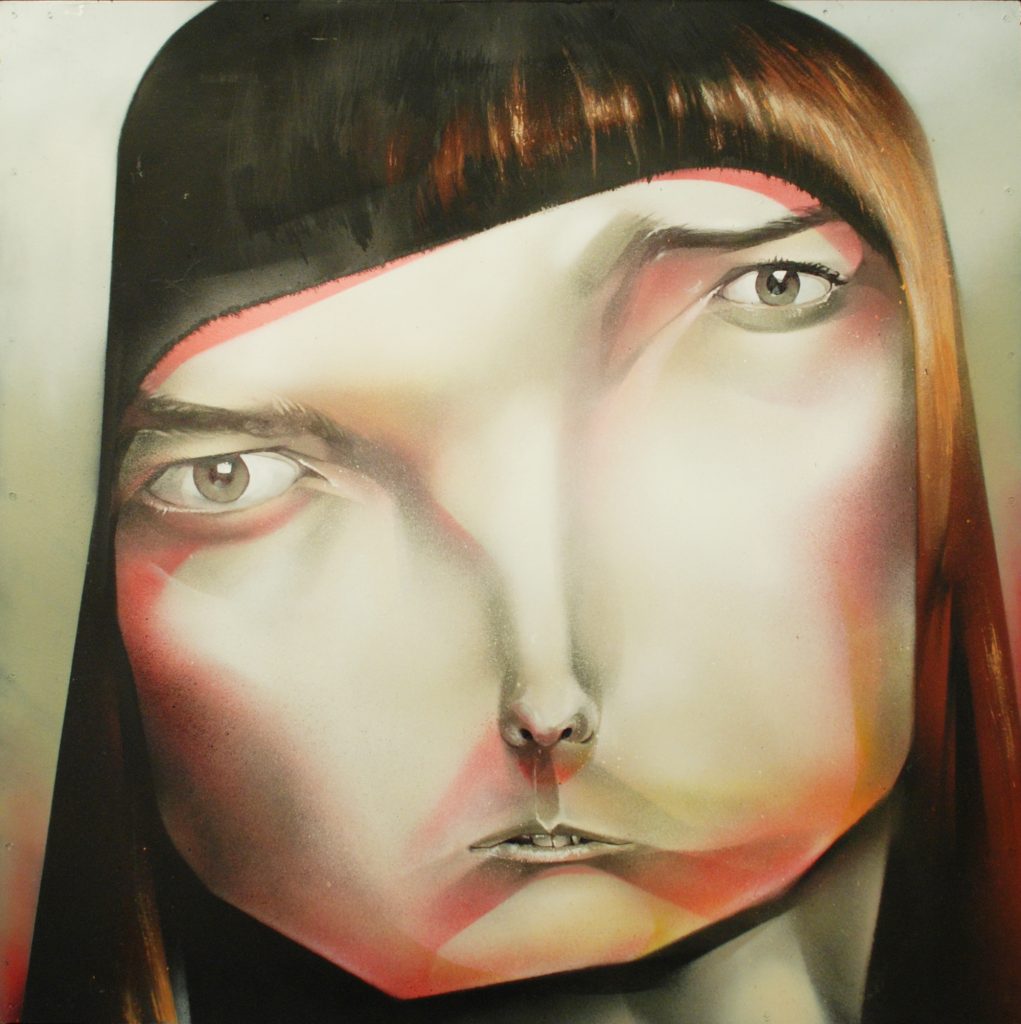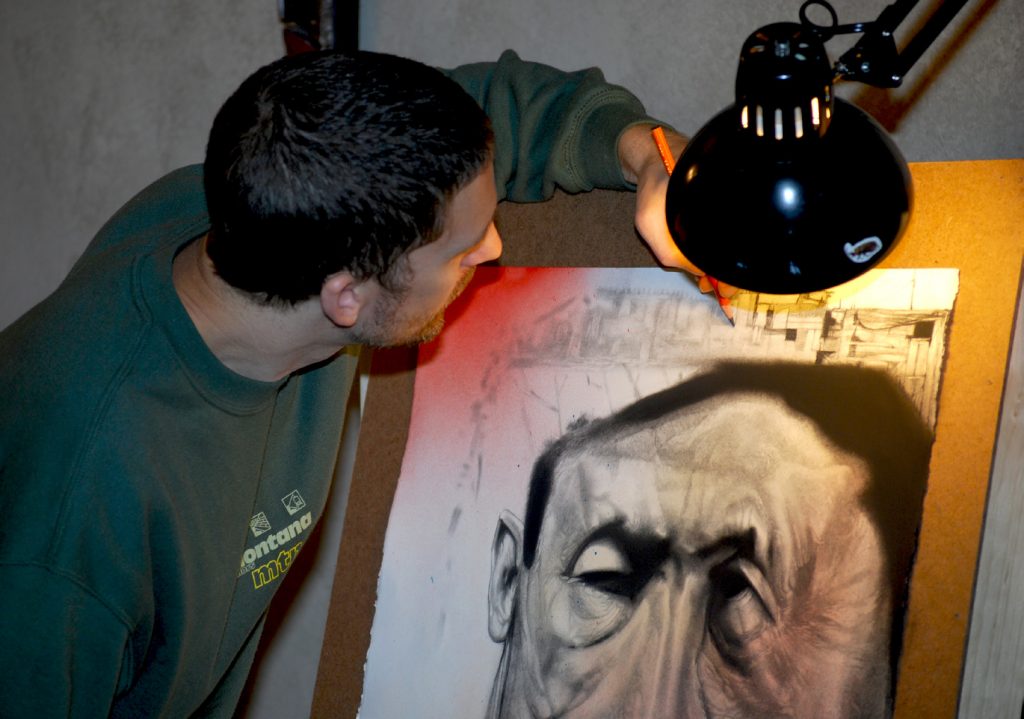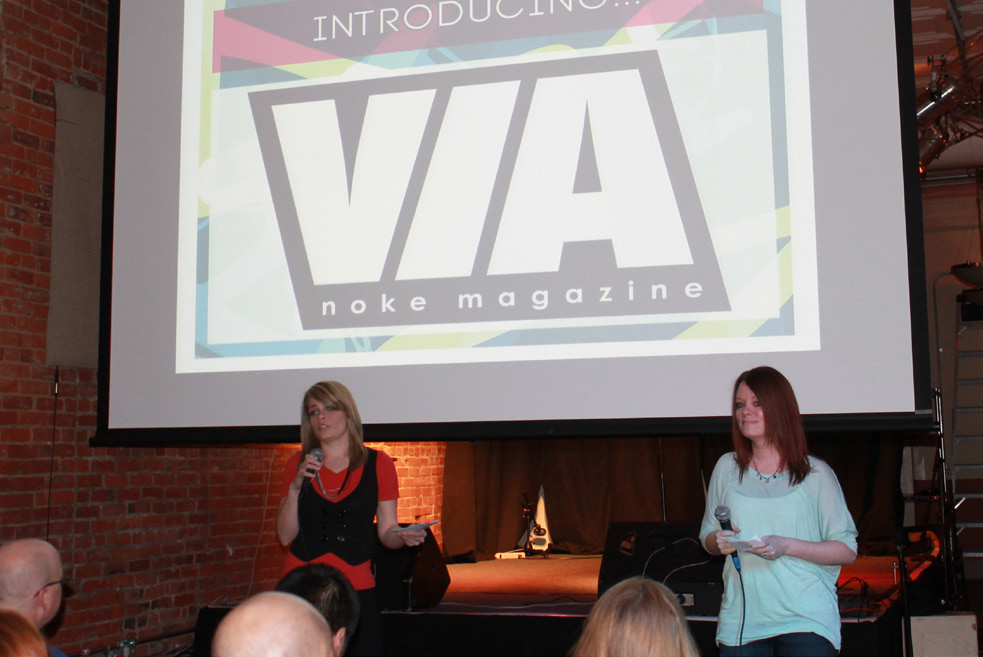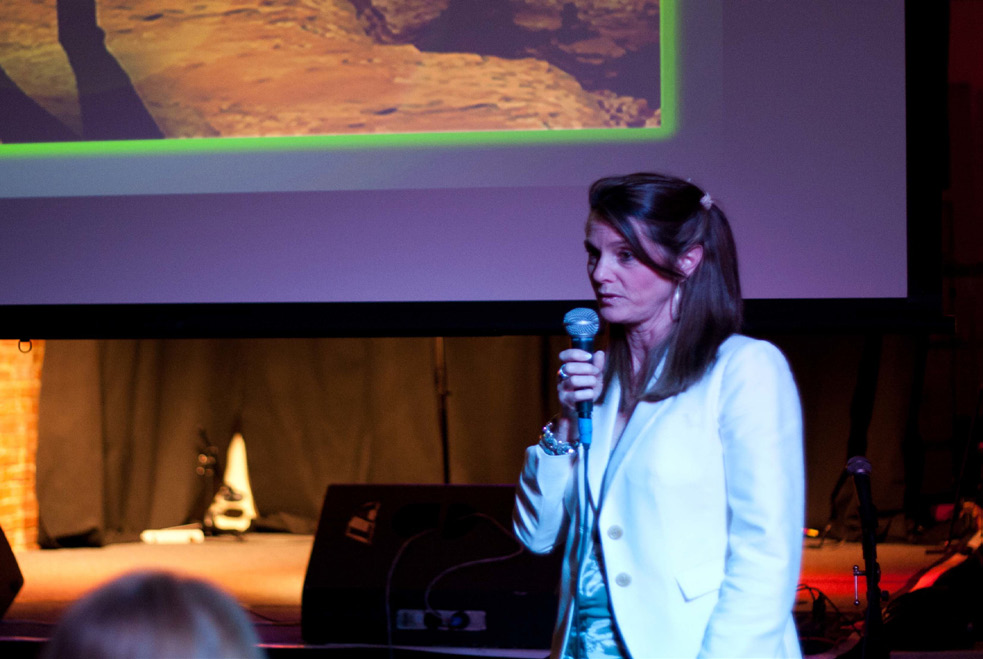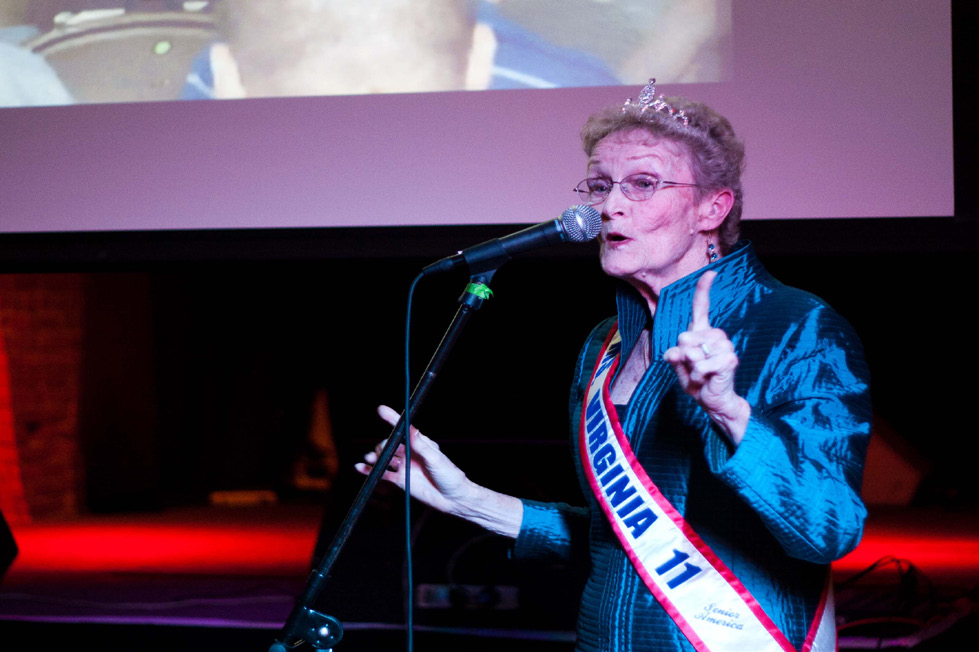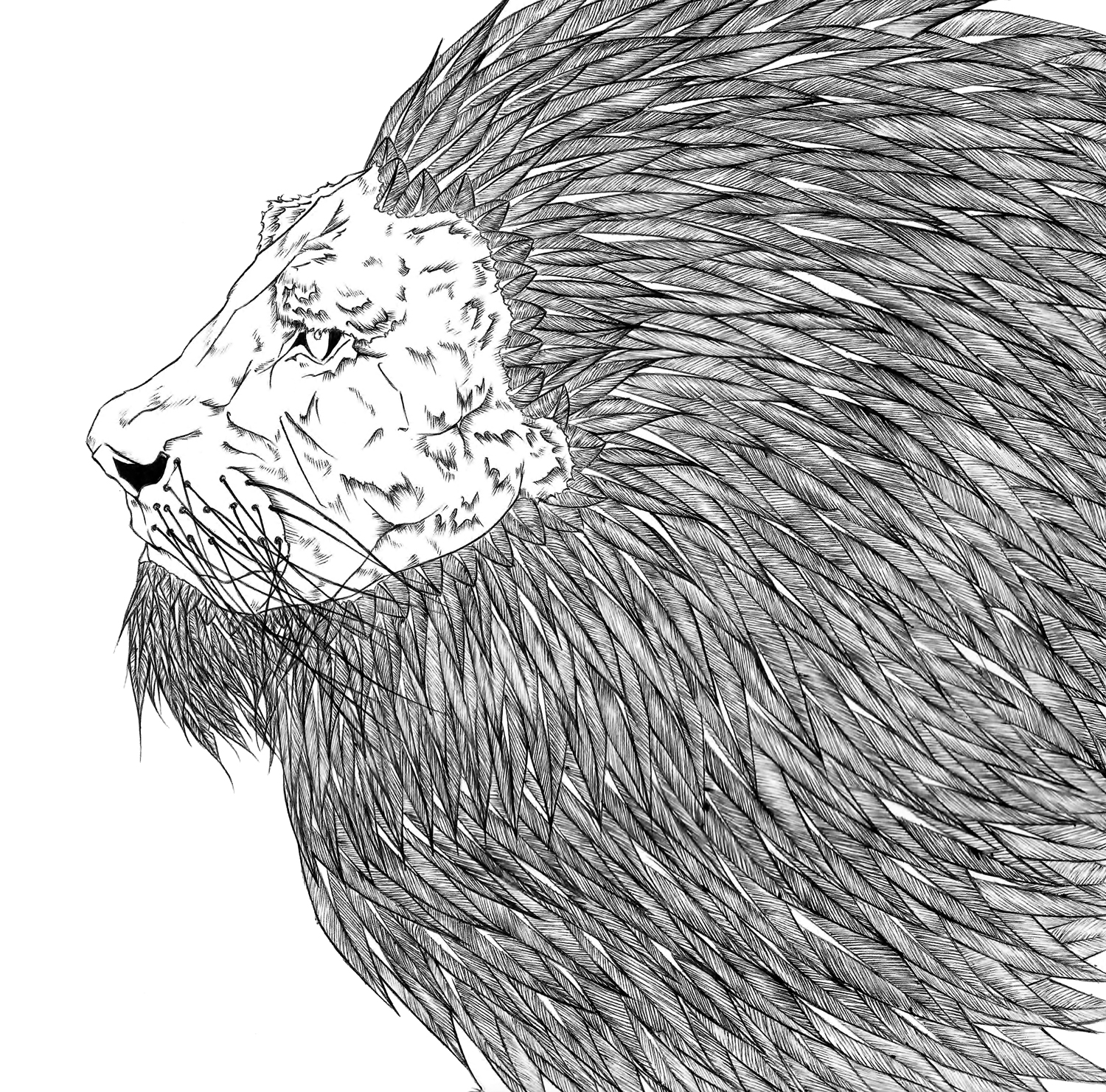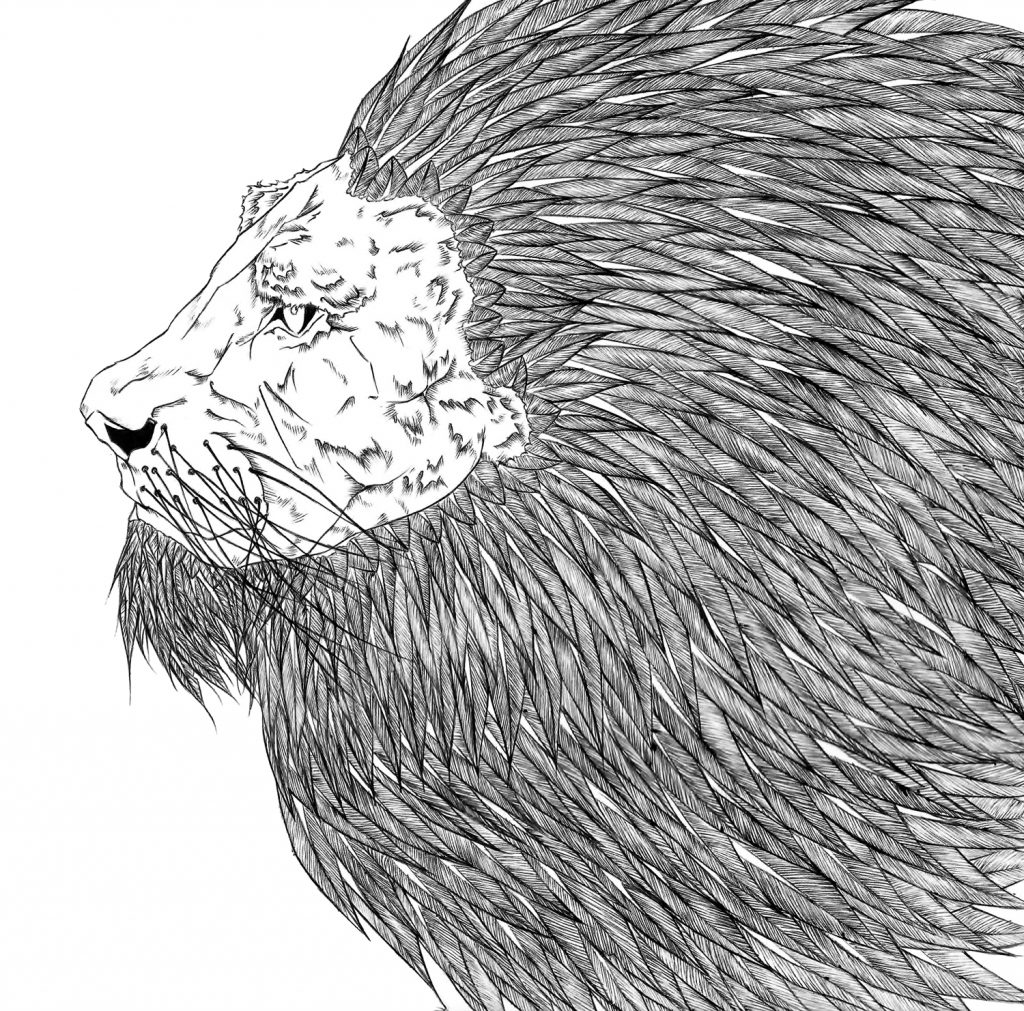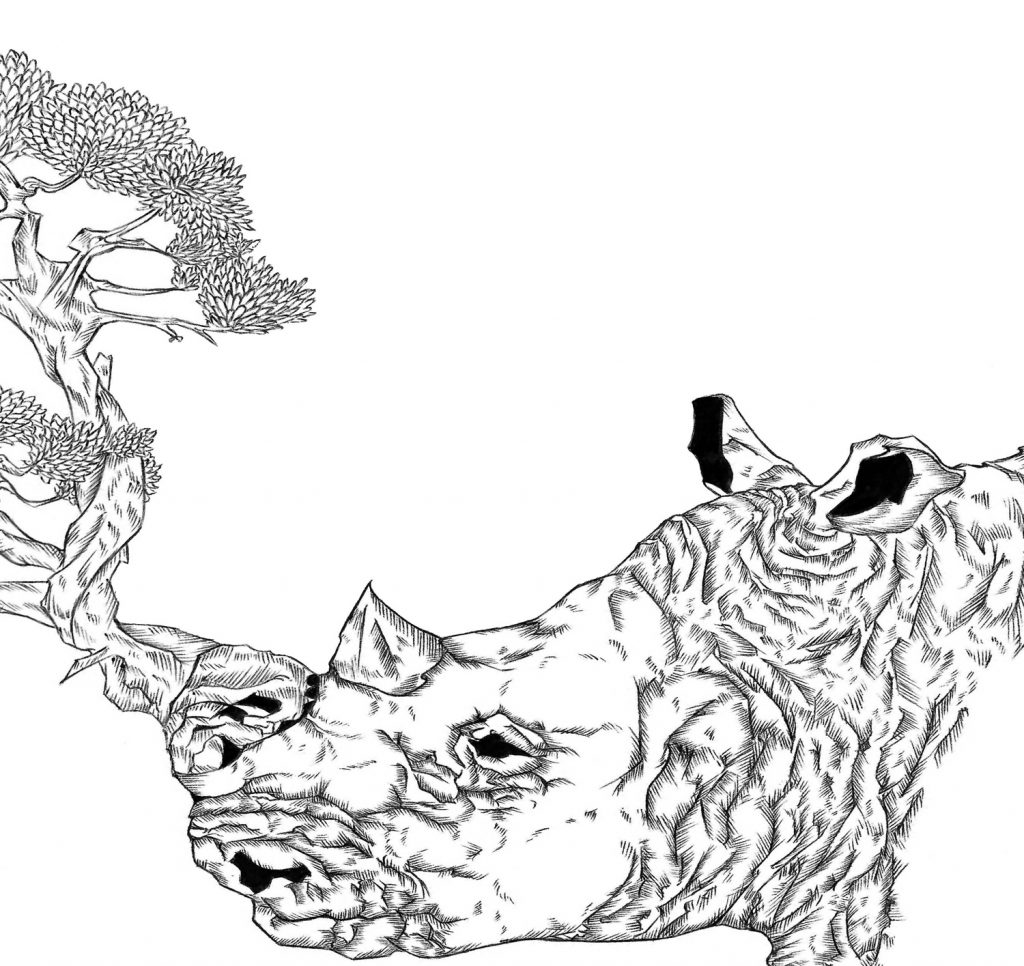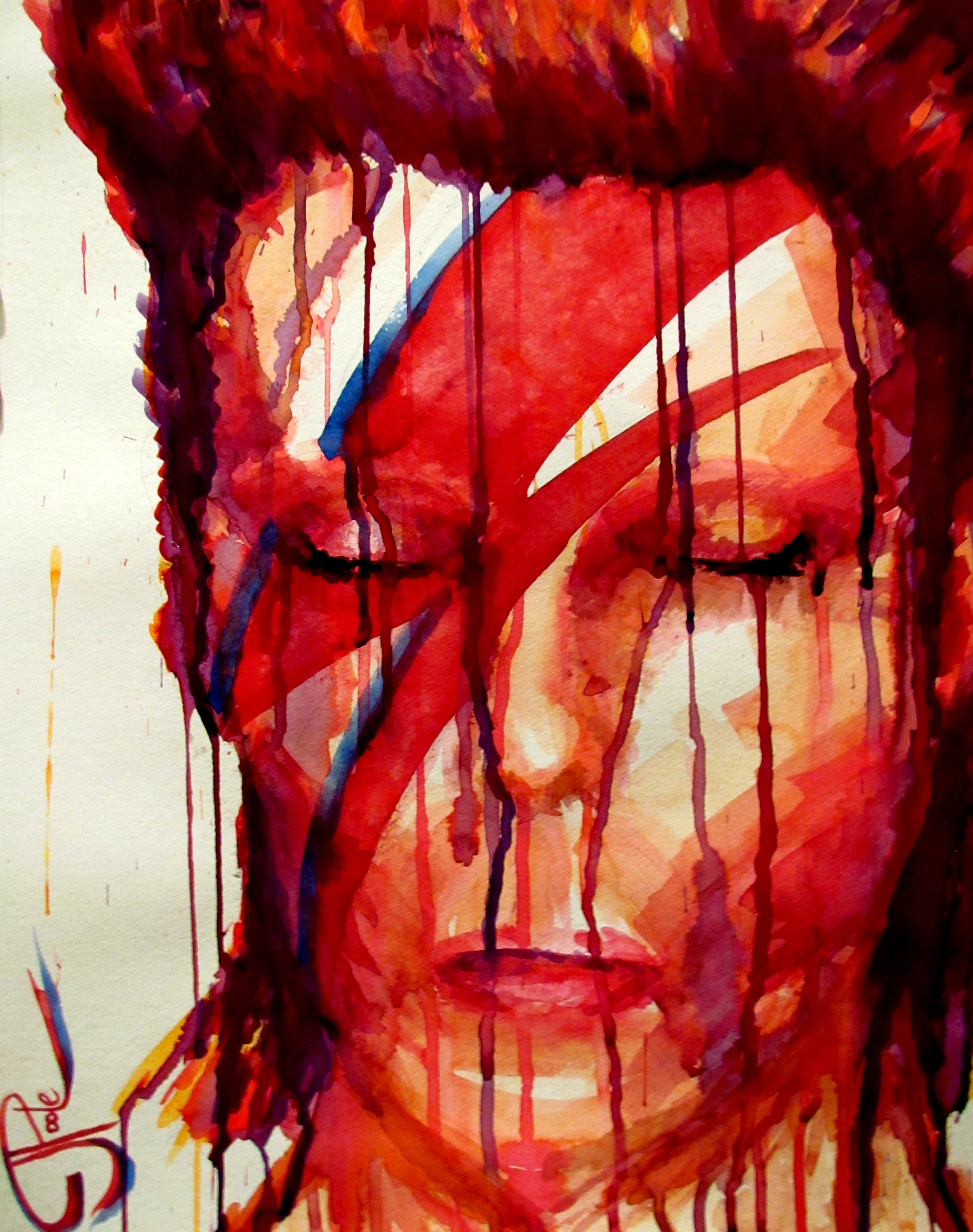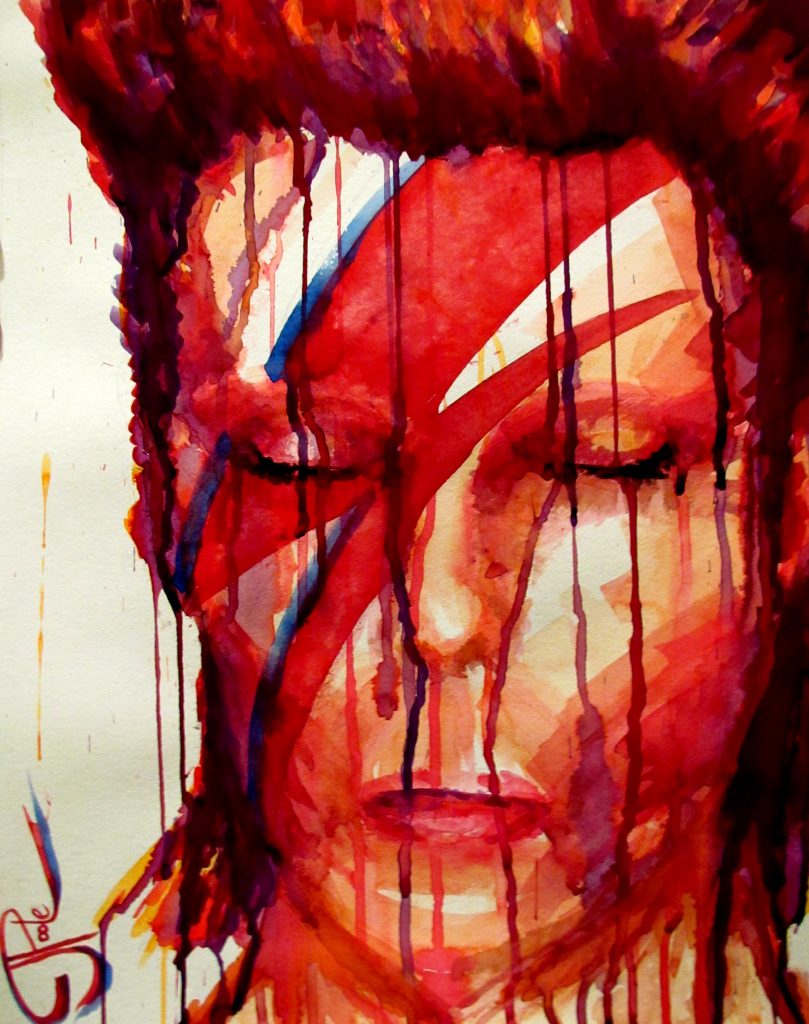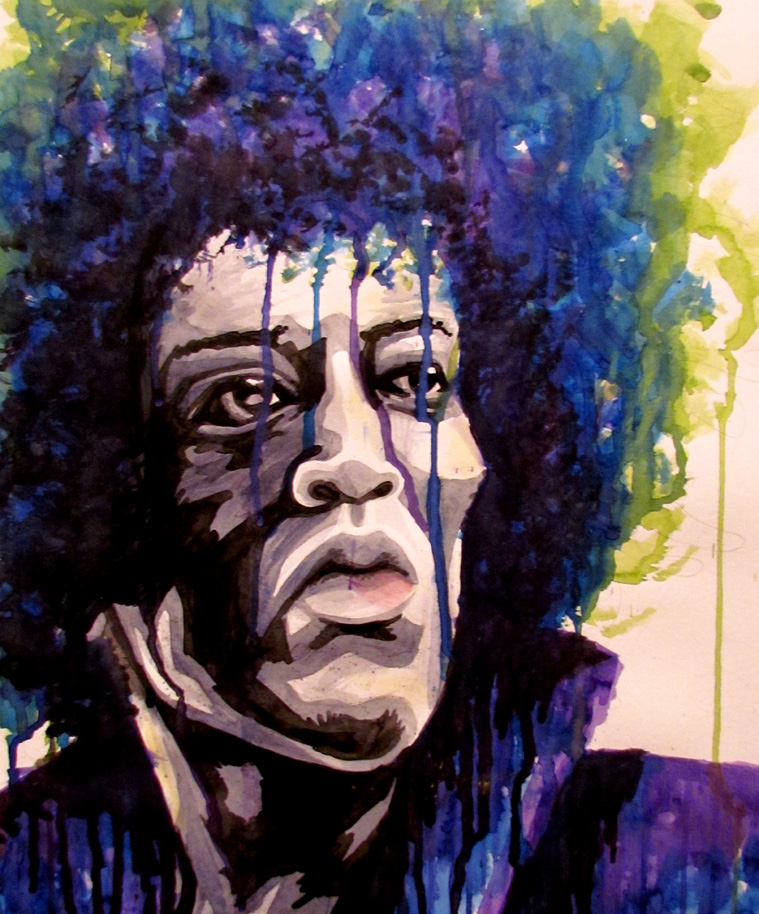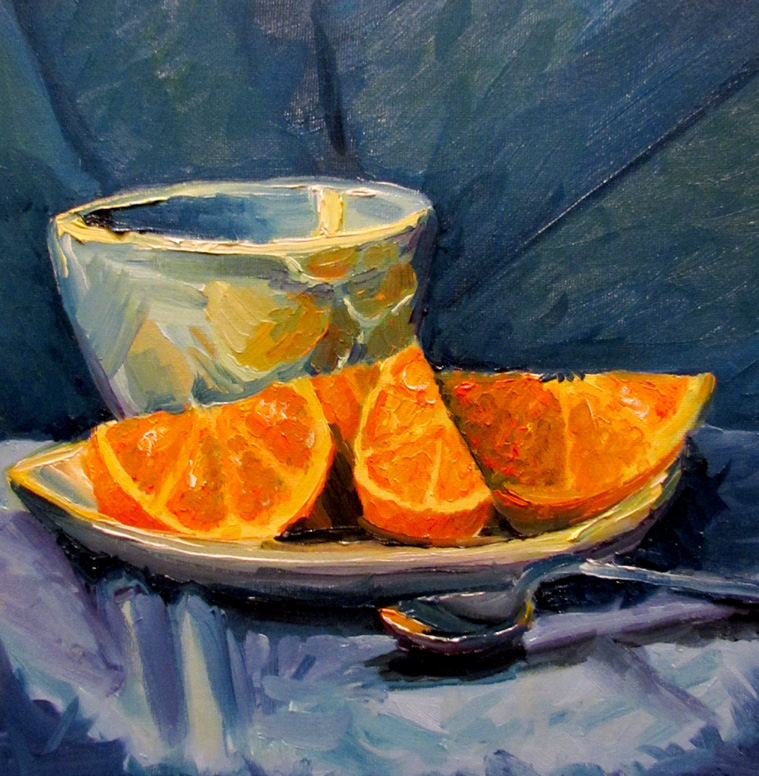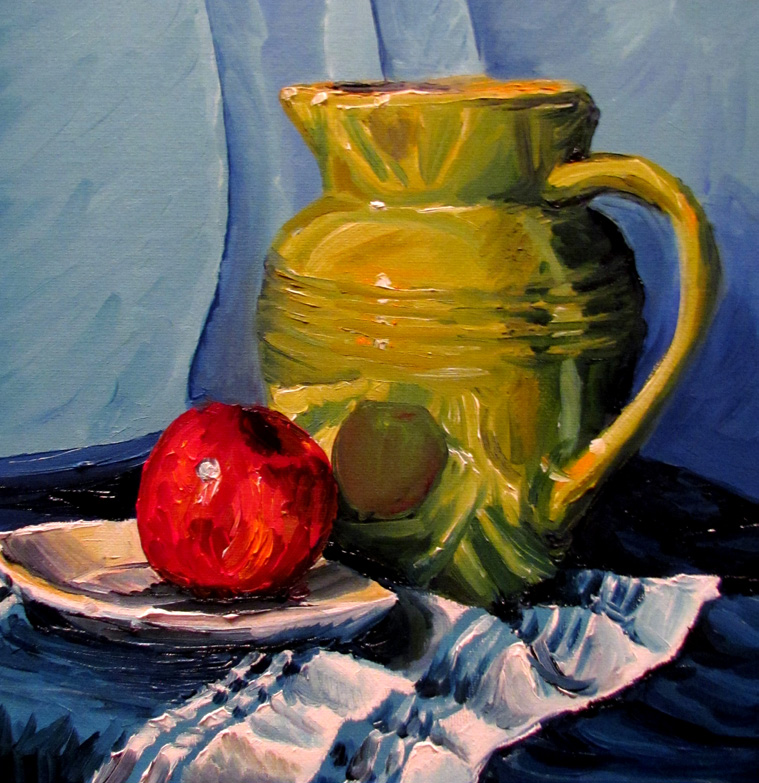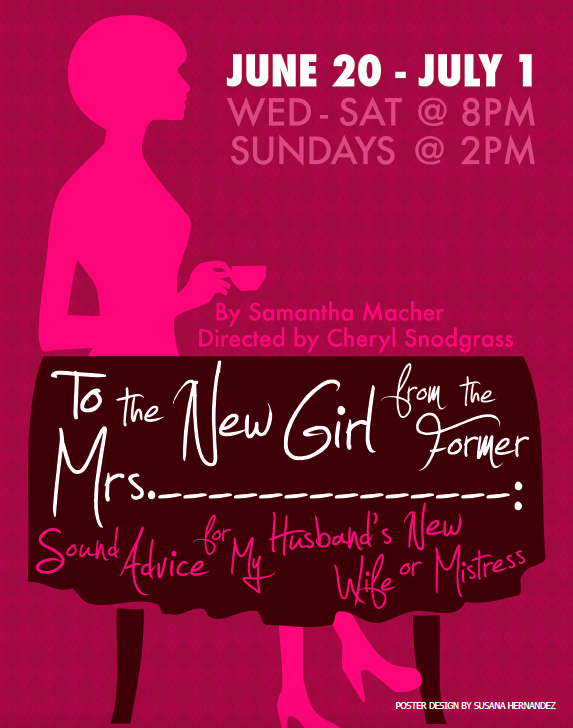Written by Tif Robinette
Affordable studio spaces for artists seem to be in short supply and high demand in Roanoke. But moving your studio out of your spare bedroom and bringing your work to a more public, professional, and accessible space can be a huge career step for artists. Betsy Hale Bannan and Gerry Bannan, a dynamic artist couple working and teaching in the Roanoke region, are making that plunge this summer. Working out of a cool space downtown, while still keeping costs low, were priorities for these two painters. In a true Do-It-Yourself spirit, they found a frightfully dirty space on 4th Street, previously a concrete business, and are transforming it into two slick studios and an adventurous mini-gallery. Still in the process of the transition into this new space, cleverly christened “BanG!”, I caught up with the busy artists.
TIF: Betsy, could you tell me a little about your work?
BETSY: I think what people most know me by are my paintings, the female figures of the stewardesses, the Madonna-type figures. They are large, symbolic, and iconic, but lately I’ve been doing drawings on paper that are organic, with seed pods. I also am making these tiny paintings that are poured oil paint. They are really just all about the paint. They have come out looking like galaxies, nebulas, and explosions. I like that they are quick and intuitive. I like doing something different. The large paintings are laden down with all the symbolism. They are hard. They are really hard paintings to do, like a puzzle. How does an airplane fit visually with a 1940’s movies star? I like working on different things and they aren’t all the same bodies of work.
TIF: Gerry, what are you working on right now?
GERRY: I have been doing ink drawings on mylar. I’ve always liked the way ink slides across mylar. In doing these drawings, I’ve pulled the drawing out of my paintings. I’ve felt an obligation to have paintings be tamed by drawing. A painting had to behave itself. I think the more I do the drawings, the more they separate. The paintings are very carefully planned. I have found a way to make my drawings be intuitive and then let my paintings be more intuitive, but [the new paintings] will be different from anything I’ve ever done.
TIF: What is your current subject matter?
GERRY: The drawings are really specific in subject matter, an assembly of objects that could be together, some drawn from life and some from my imagination. I let the objects start to tell me a story. I’m drawing a shell. What’s next to the shell? Oh, a pair of scissors. They get to be the remnants of a fairytale, or a narrative. The plant forms in them are a connection to the paintings.

TIF: As oil painters working on a fairly large scale in cramped quarters in your home, how do you think moving to this larger space will affect your materials, scale, or practice?
GERRY: Larger space will allow for having more work stations, having a drawing portion and a painting portion of my studio. I feel the two parts of my work [drawing and painting] getting pulled apart further. I like the ability to be able to work in two different ways, and walk across the room and draw, not having them truncated.
TIF: What about scale?
GERRY: I’d like to see if things get bigger. But I’m a pragmatist and will work in panels, modularly, like the 14th century altar pieces.
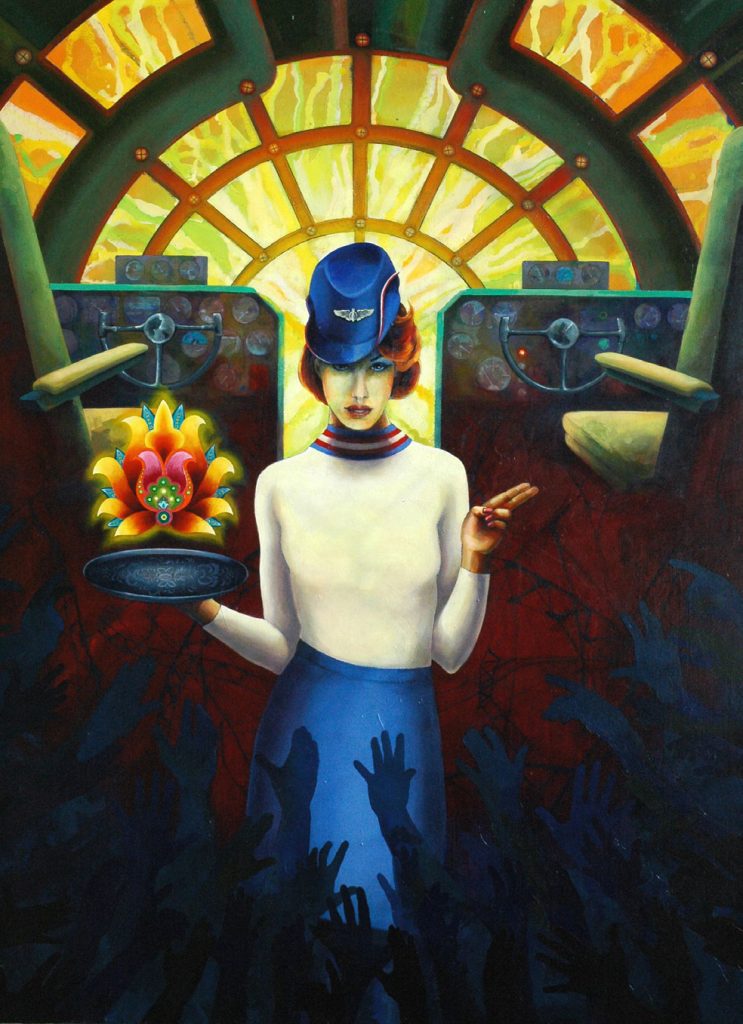
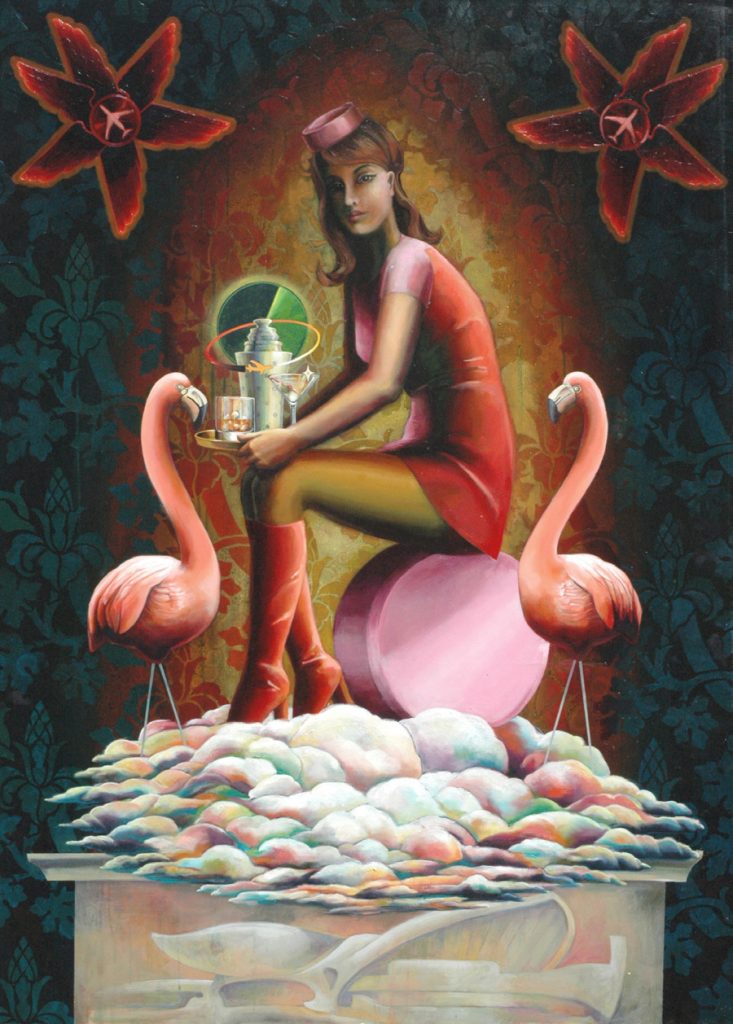
TIF: Could you talk about the process about finding this particular space?
BETSY: It’s funny how it seemed to take a long time, but also all of a sudden. We had to physically be in the house for our studios when we had a child, but now he is grown and moving off to college.
GERRY: Financial constraints too, we always found places to live where we could have extra room for us to work in the home. Our apartment in Brooklyn was very big for New York standards, and we always worked out of the house.
BETSY: I liked working at home after my full time job and kid, but now I feel like I could leave the house at 7:30 in the evening to go to the studio to work.
GERRY: It has taken a few years to find something, but it has to happen by word of mouth. A lot of leads don’t work out; spaces that could have possibilities, but when the right one comes up you have to snatch it.
BETSY: We just drove around and got numbers off of available buildings. Ideally we wanted something a little bigger, but now that we are in here, this is all we could manage. If the ceilings were higher or if the space were bigger it would have been so much more daunting.
GERRY: This whole notion of not working outside the house wasn’t only because of having a child. You go to work, come home from work, do stuff at home, and we feared we would be wasting our money on a space we wouldn’t use.
BETSY: I feared it would be unrealistic. But now it’s totally doable.

TIF: Do you think moving your studio outside your home will bump up sales or increase visibility?
GERRY: One thing that sparked all this was one of the problems of working in the home. This town has never had a successful commercial gallery that wasn’t a co-op. The art idea is that you work at home and then other people show and sell your work for you, but that doesn’t happen here. If someone wants to see my work, I don’t want to show out of my house. I want to show my work in a neutral environment.
BETSY: It’s more objective and professional: the clean, blank space. It has made us more accessible, people are already stopping by.
GERRY: We both work out of town, all day, and we have never had those experiences of just bumping into people or…
BETSY: Never happenstance or organic meetings.
GERRY: The chance encounter spawns ideas, “Let’s do this thing, then that thing turns into something else.”
TIF: So this space will be that bridge for you. Tell me about your vision for the mini-gallery.
GERRY: We want the gallery/exhibition space to invite people to be experimental in a small space. You may not have enough to fill Olin Hall. But you have a little body of work, maybe drawings. I think it can be more dynamic, changing all the time.
BETSY: Less formal, more spontaneous. And of course if no one is in there, we can hang our stuff in between. And having openings! The idea of an art party is intriguing, taking the stuffiness out, I like the idea of hanging out with art. That’s how artists live, and I don’t think people are comfortable doing that. Or used to it.
GERRY: People know how to go out and enjoy music, but how can that experience be analogous to art? Everyone is afraid to say things about the work at openings.
BETSY: You eat your cheese and stay 45 minutes, then leave. The objective is that this is accessible.
To view more work or contact the artists, check out their websites: gerrybannan.com & betsyhalebannan.com
This article was originally published in the second issue of VIA Noke Magazine, printed in Roanoke, Virginia in July 2012.

